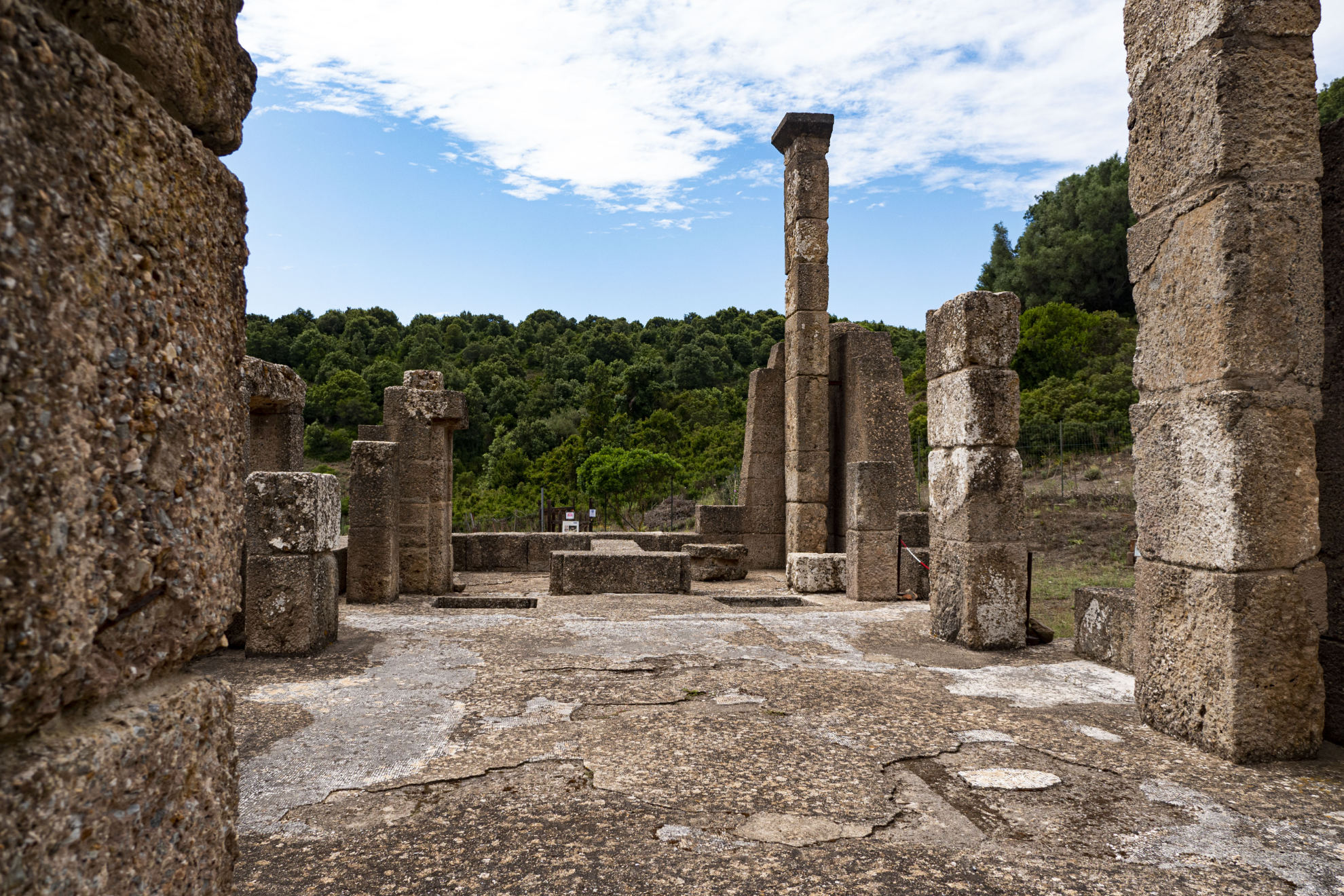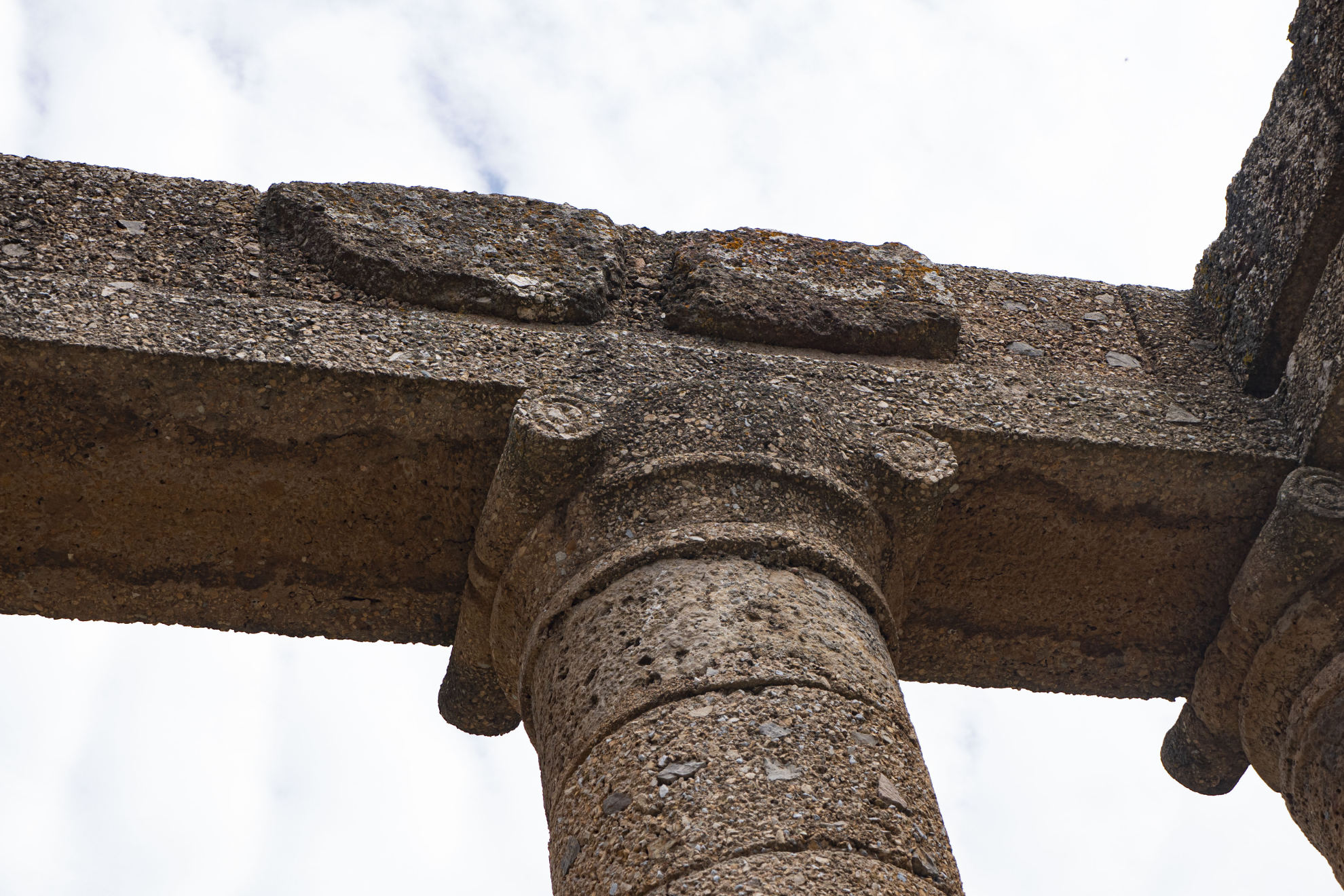The scent of helichrysum, mixed with rosemary, lavender and wild mint is almost intrusive, as if to underline the solemnity of the place, chosen by the Nuragic Sardinians for the cult of Sardus Pater Babai or Sid Addir Babay since the early Iron Age. Warrior and hunter god later honoured also by the Carthaginians and the Romans.
Ph. Giulia Caddeo

In the south west of Sardinia, the Roman columns of the temple of Antas stand indifferent to the archaeological debates and the legends which swirl around them. We are in the valley dominated to the north by the mountain "Conca s'Omu", which forms a frame with its holm oaks and mastic trees, crossed by the Rio Antas, south of the municipality of Fluminimaggiore, about 10km from the town.
A few metres from the building, three tombs of the Nuragic age were found, belonging to a larger necropolis, of which there are few similar examples in Sardinia: only one was found to contain human remains, while in the other two there were commemorative remains , including a bronze statue of a naked man with slightly bent legs, his right hand raised as a sign of blessing and a spear in his left hand. The statuette could represent the oldest evidence of the Sardus Pater cult.
Ph. Giulia Caddeo

Part of the temple dates back to the Carthaginians, who built it at the end of the fifth century BC in honour of the Punic deity Sid Addir Babay, in continuation of the cult of the Nuragic Sardinians. Later, Augustus had the Roman temple built, that was subsequently restored by Caracalla. The inscription dedicated to the emperor contains among other things: TEMPL (um) DE SARDI PATRIS BAB., which leaves no doubt about the intended use of the building.
The site was discovered in 1836 by General Alberto La Marmora, but was only identified as a place of worship of the Sardus Pater, in 1954, by the student L. Caboni, who, grappling with his university thesis, discovered a fragment of the epistyle, after archaeologists had desperately searched for the temple dedicated to the god for centuries.
Ph. Giulia Caddeo

Following its connection with the Sardus Pater, the location gave rise to numerous studies that would revolutionise the history of the peoples of the Mediterranean and identify the mythical Atlantis, first mentioned by Plato in the fourth century BC, actually in Sardinia. Atlantis is said to have been a naval power located "beyond the Pillars of Hercules", which had conquered numerous portions of Africa and the Mediterranean with its merciless warriors who moved easily by sea, only stopping when they saw their land "sink beneath the waves in one day by Poseidon hand”.
Many have sought Atlantis among the Mediterranean lands above and below the water, others endorse the hypothesis that it was a mere invention of Plato to justify his political ideas. While we wait for another university student to revolutionise history with some sensational discoveries, let's breathe the magic of an ancient place full of history.

